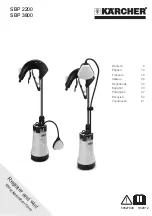
10
7 SERIES 700A11 INSTALLATION MANUAL
Typical open loop piping is shown below. Always maintain
water pressure in the heat exchanger by placing water
control valves at the outlet of the unit to prevent mineral
precipitation. Use a closed, bladder-type expansion tank
to minimize mineral formation due to air exposure. Ensure
proper water flow through the unit by checking pressure
drop across the heat exchanger and comparing it to the
figures in unit capacity data tables in the specification
catalog. 1.5-2 gpm of flow per ton of cooling capacity is
recommended in open loop applications.
Discharge water from the unit is not contaminated in any
manner and can be disposed of in various ways, depending
on local codes, i.e. recharge well, storm sewer, drain field,
adjacent stream or pond, etc. Most local codes forbid
the use of sanitary sewer for disposal. Consult your local
building and zoning departments to assure compliance in
your area. On VS systems, a modulating valve, as shown in
figure 9c is the best choice to limit water consumption.
Figure 9b: Open Loop Solenoid Valve Connection Option
Typical slow operating external 24V water solenoid valve
(type VM) wiring and one (1) quick operating valve.
Figure 9a: Open Loop Solenoid Valve Connection Option
Typical quick operating external 24V water solenoid valve
(type PPV100 or BPV100) wiring.
Flexible
Duct Collar
Vibration
Absorbing Pad
P/T Plugs
Drain
Hot Water Generator
Connections
Auxiliary
Heater
Knockout
Low Voltage
to Thermostat
and Valve
Unit Supply
Aux. Heat Supply
Water Out
Water In
Shut Off Valves
Boiler Drains
For HX Flushing
Disconnects
(IfApplicable)
Rubber Bladder
Expansion Tank
Solenoid
Valve
Shut Off Valves
(to isolate solenoid
valve while acid flushing)
Strainer
Flow Control
Valve
(on outlet of
Solenoid Valve)
Compressor
Line Voltage
Figure 10: Open System - Groundwater Application
NOTE:
SW2-4 and SW2-5 should be “OFF” to cycle with
the compressor.
Open Loop Ground Water Systems
NOTE:
For open loop/groundwater systems or systems
that do not contain an antifreeze solution, set SW2-Switch
#1 to the “WELL” (30°F) position. (Refer to the DIP Switch
Settings in the Aurora Control section.) Slow opening/
closing solenoid valves (type VM) or modulating valves are
recommended to eliminate water hammer.
Modulating Water Valve Setup
When using a modulating water valve (23P529-01) the use
of an AID Tool will be necessary to adjust minimum and
maximum flow rates. The factory default is: minimum=50%
and maximum=100% flow levels. See the 7 Series FCV1-GL,
FCV2-GL Pump Setup and Modulating Water Valve Setup
instructions within the Unit Startup section which is located
in the back of this manual. See Recommended Minimum
and Maximum Flow Rates table. Always ensure that there is
adequate flow for the heat pump.
Acc Com
Acc NC
Acc NO
1
2
3
C
R
P1
P2
SV
Solenoid
Valve
C
R
Acc Com
ACC NC
Acc NO
VM Valve
NOTE:
SW2-4 should be “OFF” and SW2-5 should be “ON”
when using a slow opening (VM) water valve.
Figure 9c: Modulating Water Valve Connection Option
Typical 0-10VDC modulating water valve.
VS
GND
24 VAC
0-10DC
1
2
3
R
C
ABC BOARD
AXB BOARD











































